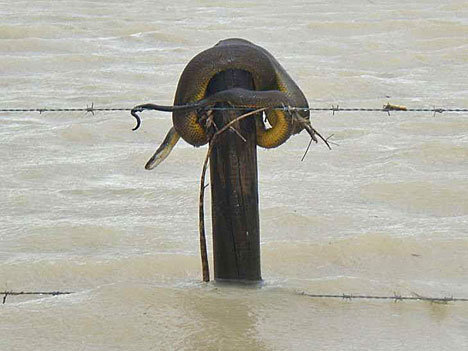MDBA warns of quality risk
 The Murray-Darling Basin Authority says widespread flooding raises the risk of water quality issues.
The Murray-Darling Basin Authority says widespread flooding raises the risk of water quality issues.
The Murray-Darling Basin continues to experience widespread flooding in some areas, prompting an increased risk of water quality issues like low-oxygen blackwater as temperatures increase.
Governments and water authorities are working to monitor the conditions, which may see low-oxygen blackwater and blue-green algae emerge, leading to fish deaths and increased water treatment.
Given the scale of natural flooding, prevention is not possible and mitigation options are very limited.
Murray-Darling Basin Authority Senior Director, Environmental Management, Dr Janet Pritchard, says the significant and widespread flooding in the Murray-Darling Basin would see water extending to some floodplains that have not had water on them for several years.
“Hypoxic blackwater events occur as leaf litter and other carbon-based debris is swept into waterways. As this material is consumed and broken down by bacteria, oxygen can be sucked out of the water, making it difficult for fish and other aquatic animals to survive,” Dr Pritchard said.
“There are already isolated reports of crayfish exiting floodwaters to escape poor water quality.
“With the onset of warmer weather in the coming weeks, water temperatures will start to climb and the possibility of hypoxic blackwater will increase and unfortunately, we could see fish deaths like we did during the 2011 and 2016 floods.
“In the past 20 years, large-scale hypoxic blackwater events have been associated with late spring or summer floods, particularly in the Murray, Edward-Wakool, Lower Darling and Murrumbidgee rivers. This season the risk will apply to several other systems across the Basin in New South Wales (NSW), Victoria and South Australia as well.
“The high flows and widespread flooding will also add nutrients to waterways, which will favour the growth of blue-green algae with warmer conditions. As floodwaters recede back to normal levels, we will also be on the look-out for elevated salinity levels in some locations,” she said.








 Print
Print